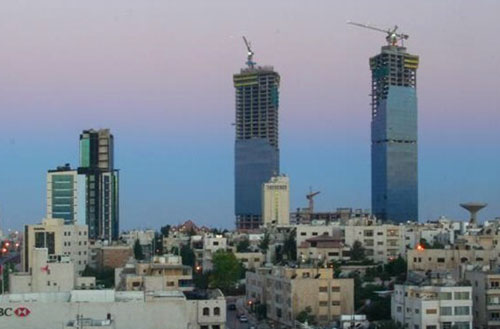TA brings hydronic balancing to Jordan's skyscrapers.
 Other News
Other News Subscribe to newsletter
Subscribe to newsletter
| 14 Jan 2010 |
Tour & Andersson is supplying its valves for use in the waterborne heating and cooling system of the prestigious Jordan Gate Towers project in Amman, Jordan. As the leader in hydronic balancing, Tour & Andersson is able to deliver a bespoke solution that will meet the intensive cooling and energy efficiency needs of the building.
The Jordan Gate Towers project consists of two towers with a mall in between, due for completion in June 2010, when they will be the largest skyscrapers in the region. A comprehensive valve specification was required to ensure both buildings are serviced with controllable cooling and heating technology.

Due to the height of the new buildings, coupled with the extremes of temperature in the region, it was important to ensure that a cooling system was installed that would be able to cope with these conditions, delivering a consistent temperature across all floors in the most energy efficient way. Tour & Andersson’s specialist expertise was integral to the commissioning of such a system, recommending a combination of STAD, STAF, Autoflow (for chillers) and terminal balancing valves.
The two Jordan Gate Towers, which scale an impressive 34 floors respectively, cover a total land area of 28,506sqm. The buildings themselves house a number of offices, a triple floored shopping complex, and a new five-star Hilton Hotel complete with gymnasium, two swimming pools and three restaurants. As the buildings offer such a wide variety of services, it is necessary to ensure that the heating and cooling system is able to meet its daily demands.
Amjad Dabbas, Managing Director of EAST (Engineering Advanced Systems Technology) commented, “We supplied a combination of our valves to create a bespoke system that would be able to cope with the intensive energy demands of the building, which, due to the extreme heat, was a real issue. Once both buildings are up and running, their combined cooling load will be in excess of 18.0MW and the heating load at around 10.0MW. Our specialist knowledge and expertise meant we were able to deliver a solution that would meet these needs whilst also helping to drive down installation time and associated costs as a result.”




